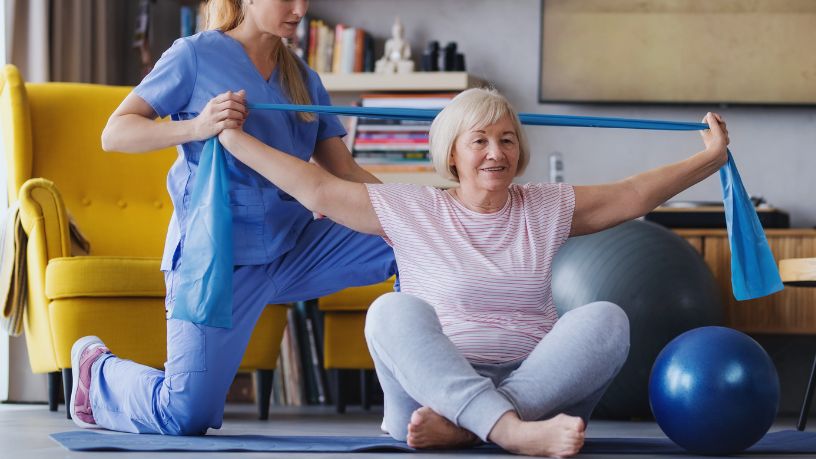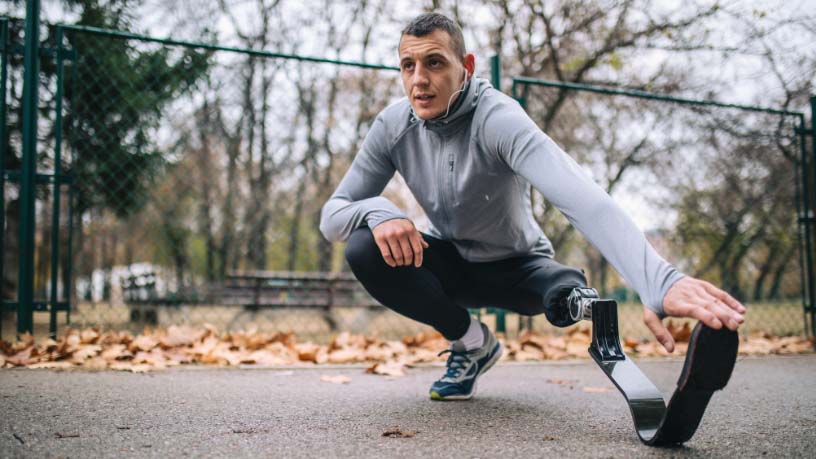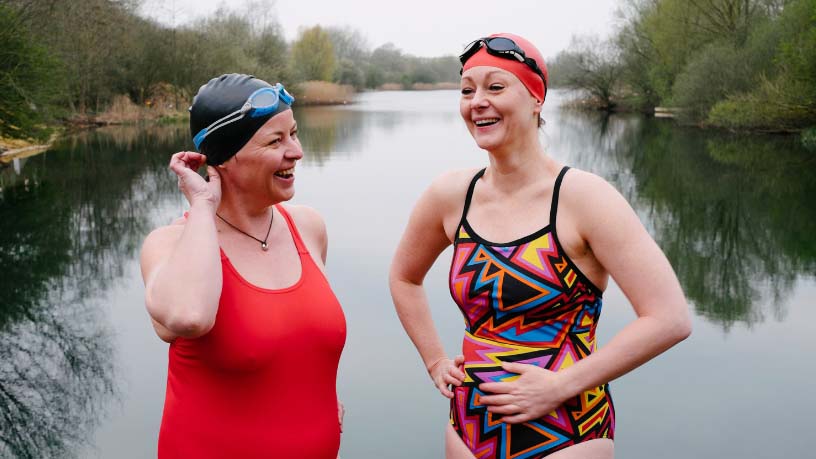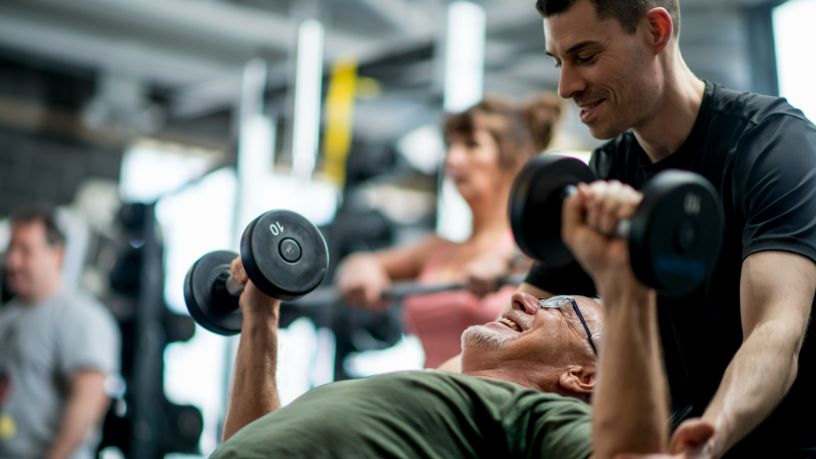[Michelle lifts weights over her head, assisted by a trainer at her gym.]
Michelle: Exercise completely changed my life.
[Michelle sits on a couch in her living room, speaking with someone off camera and flipping through paperwork.]
My cancer journey began in 2019 when I went for a routine blood test. It came out that I have chronic lymphoma, leukaemia.
I was also suffering from osteoarthritis and I couldn't walk.
I was too embarrassed to go out with my friends anymore. I was 40 kilos overweight and the weight was crushing my knees.
[Michelle looks at gym options on her laptop.]
I had to keep going. I had to try.
Because I didn't want cancer to take over my body.
[Michelle boxes with a personal trainer at her gym.]
I started with a personal trainer, I started training.
[Michelle in her living room, speaking with someone off camera and using her laptop.]
I followed their programme religiously and the weight was starting to come down.
I was always nicknamed 'Gym Girl' and also going to the gym, it helped with my mental health.
[Michelle and one of her trainers share a tight hug. She high fives another trainer.]
In 2021 in lockdown, I started having really, really disturbing symptoms.
[Michelle in her living room.]
Colon cancer. And that, um, that devastated me.
I was, I was devastated.
And within 3 weeks I was on the... emotional...
[She pauses to wipe her eyes].
I was on the operating table.
[Michelle walks down the street.]
They had to remove 30 centimetres of my colon and I was very, very lucky, hadn't spread.
And then soon as I recovered, they wanted to start chemo to make 100% sure that it was gone.
[Michelle does pull downs at the gym.]
I went to the gym the whole time I was on chemo.
I just did what I could, and then I'd go home and rest.
So that's what I did.
[Michelle in her living room.]
Yeah, I just did the best I could.
If it's an early diagnosis, exercise makes the world of difference.
[Michelle does leg presses, lifts weights and boxes at the gym.]
I had an update about 3 months ago and there's no more signs of any cancer, any reoccurrence.
Continuing to strength train and exercise. It's in my blood now, it's my passion.
I want to see if I can help people around my age realise how important movement is.
It's not too late.
[Michelle shows off the tattoo on her upper arm. It's a barbell with the word 'Strength' in cursive in place of the bar.]
I started training at 60 and I'm the strongest I've ever been.






